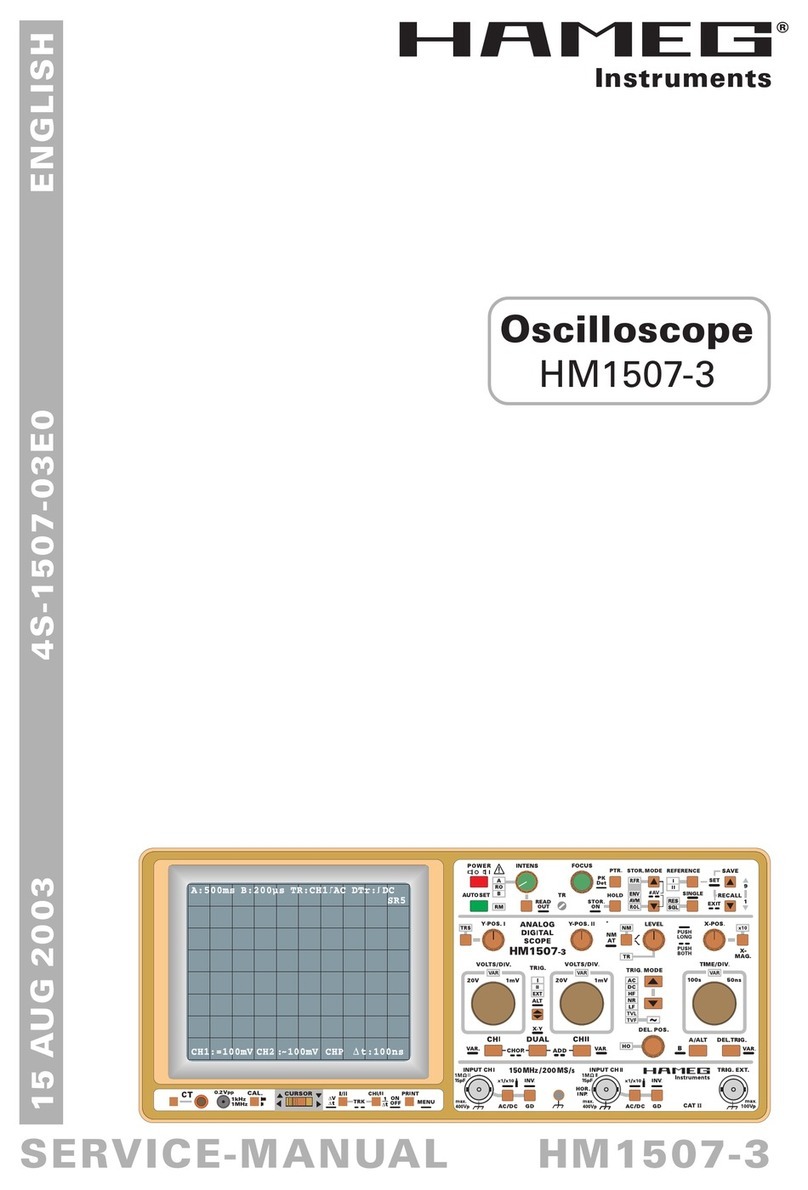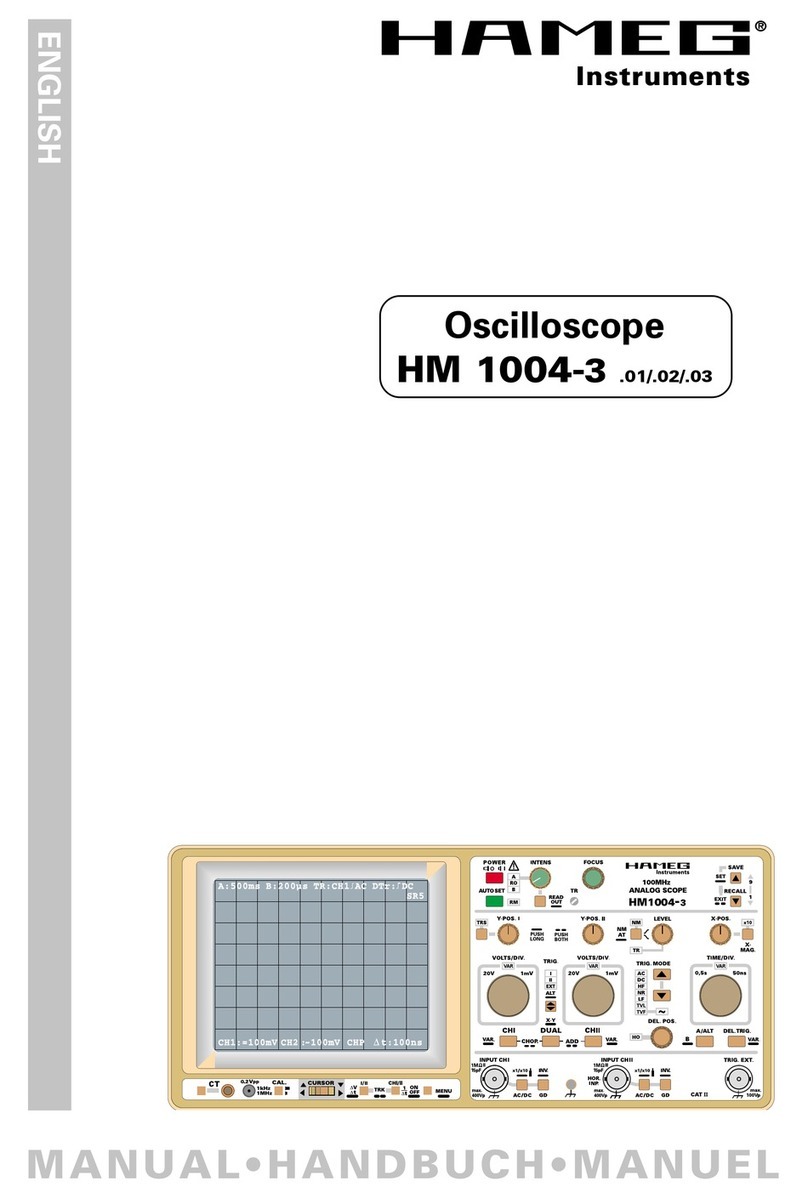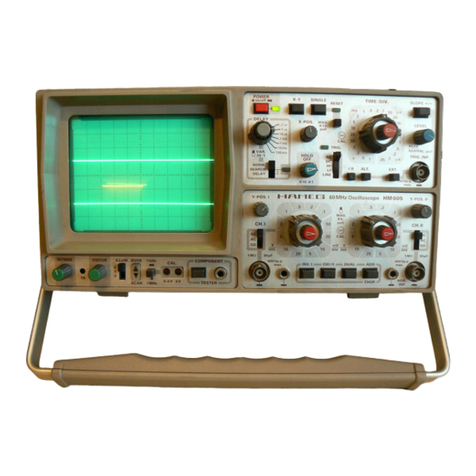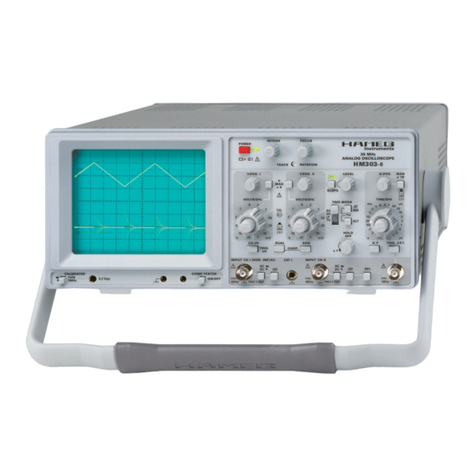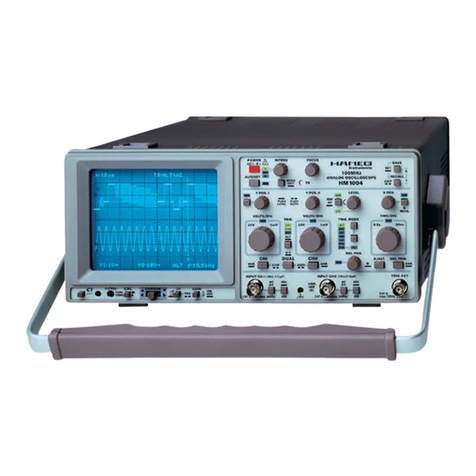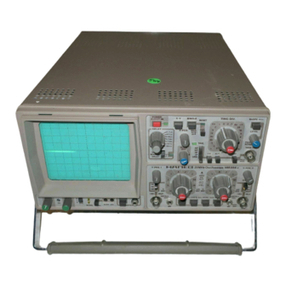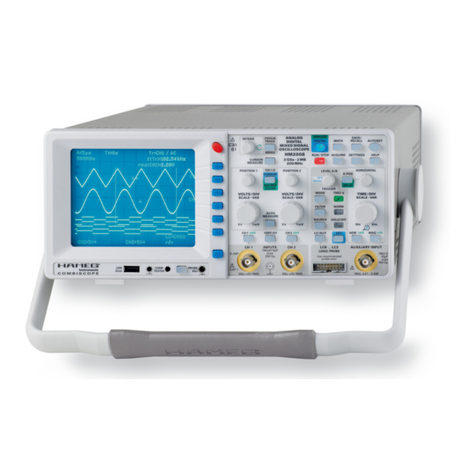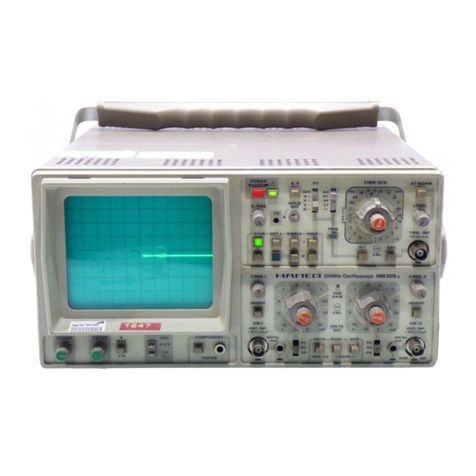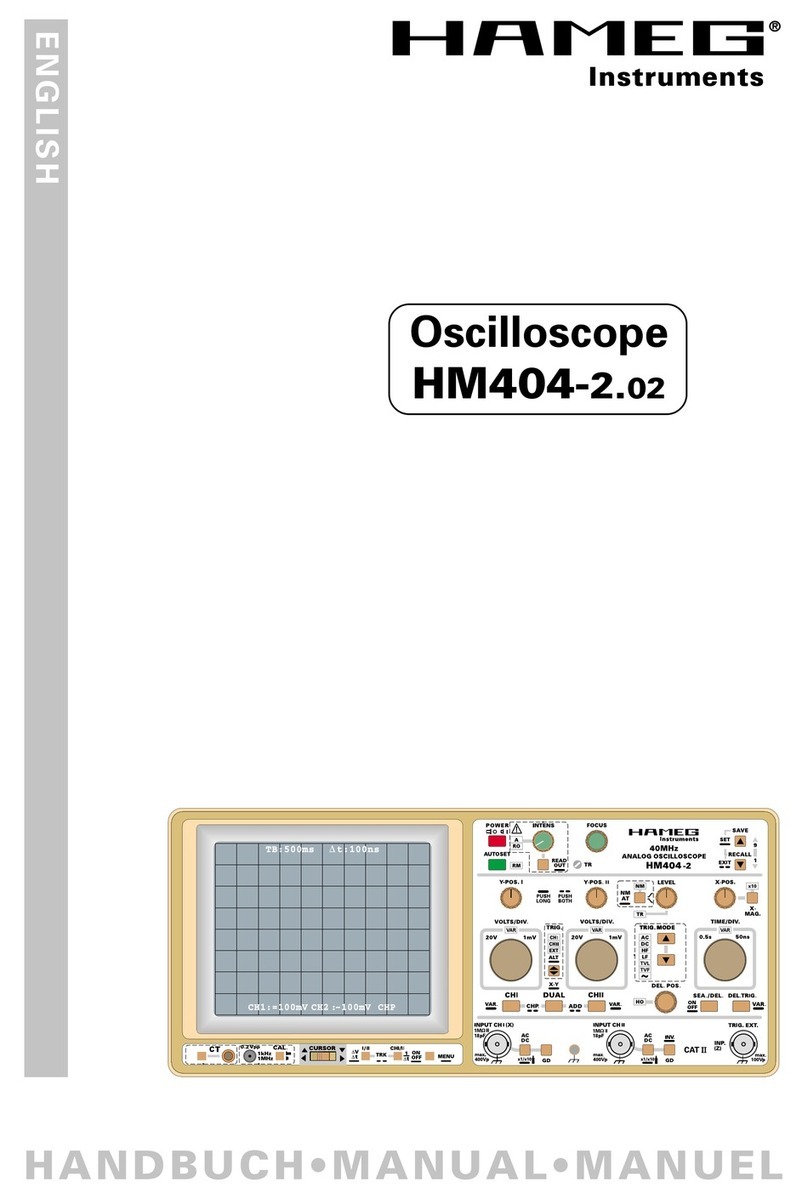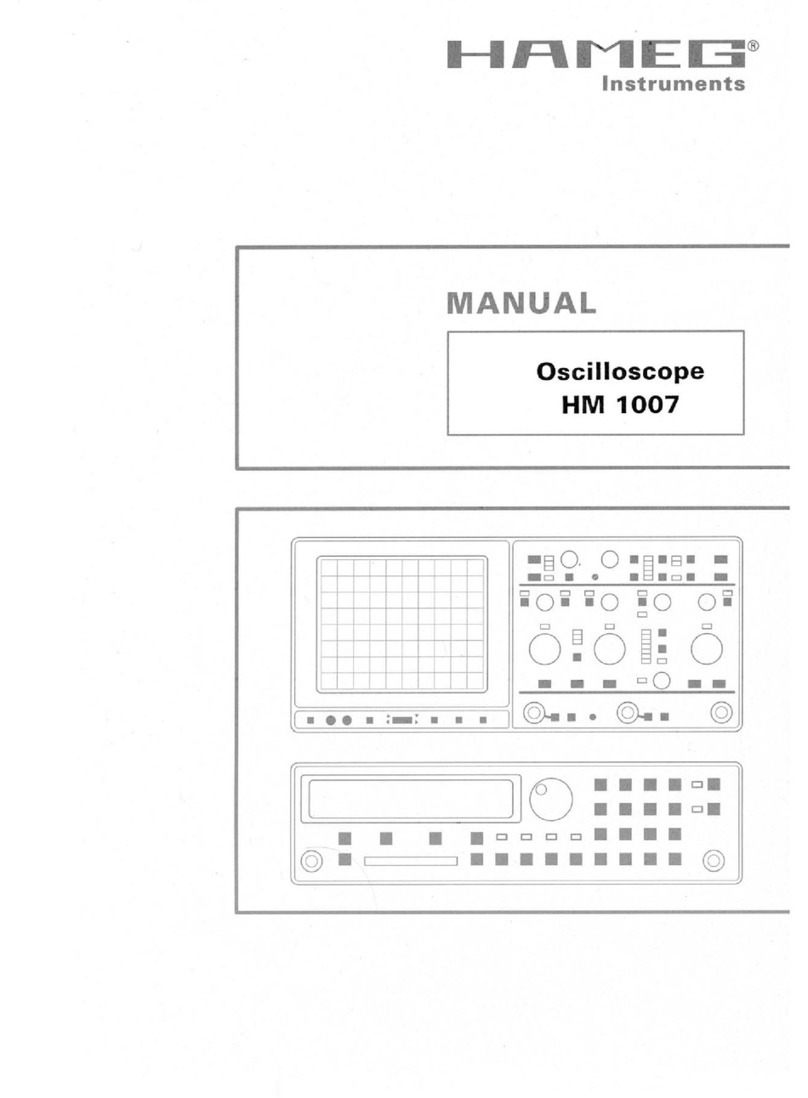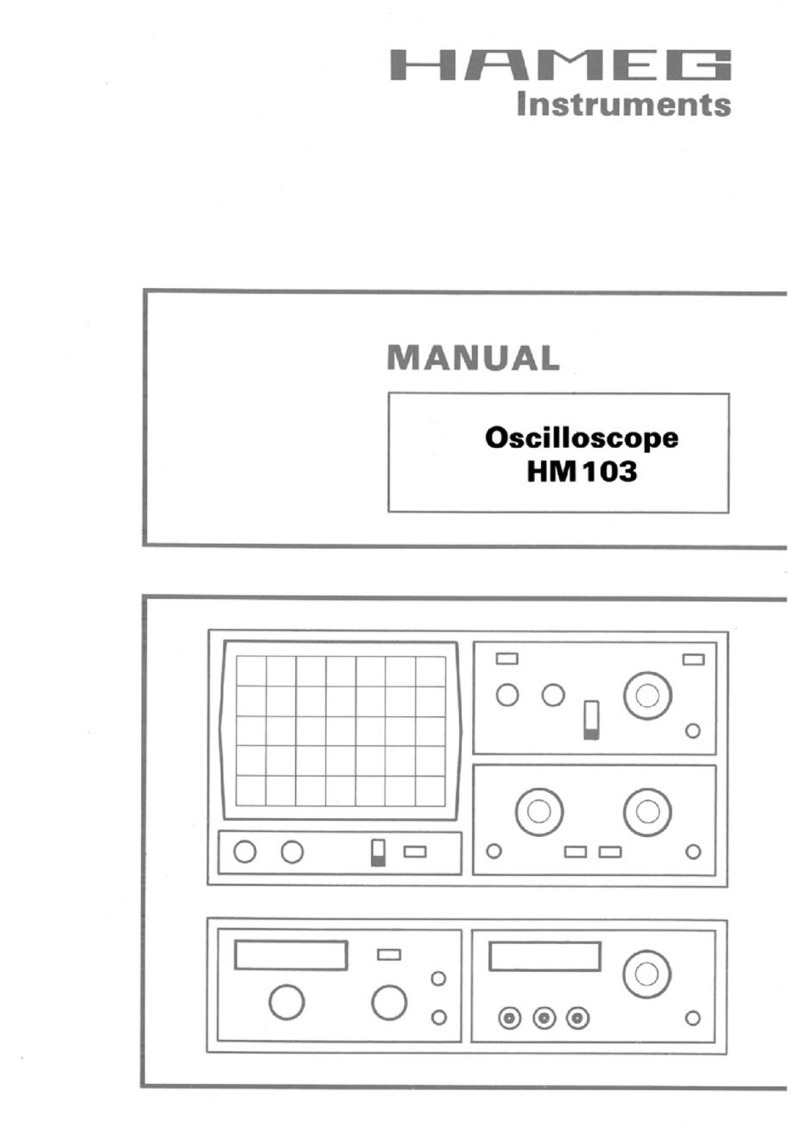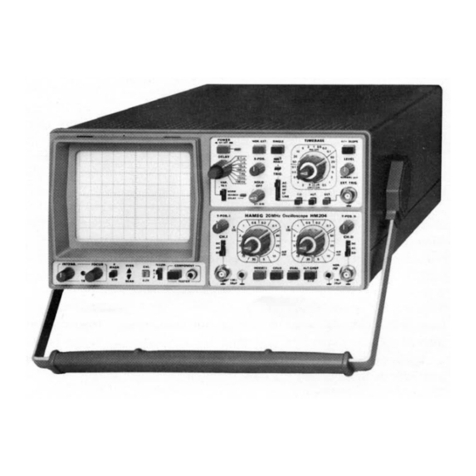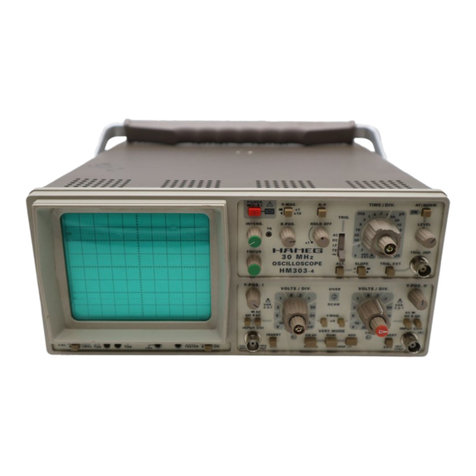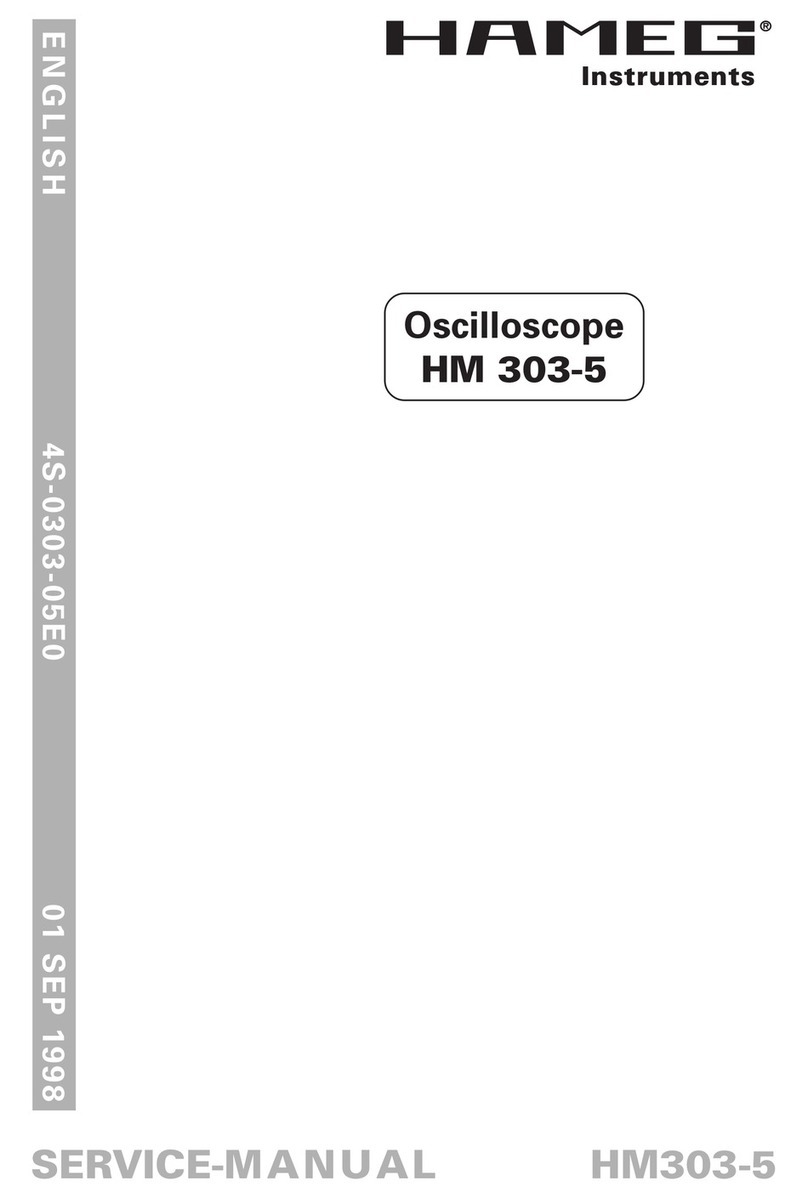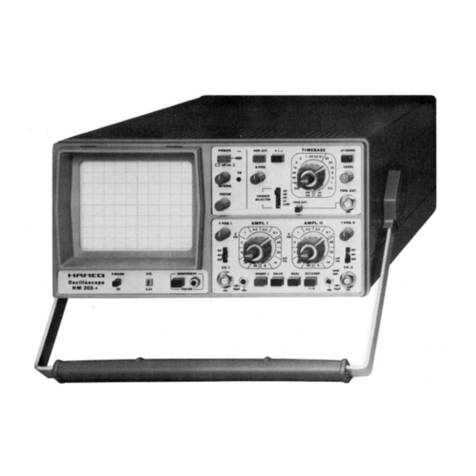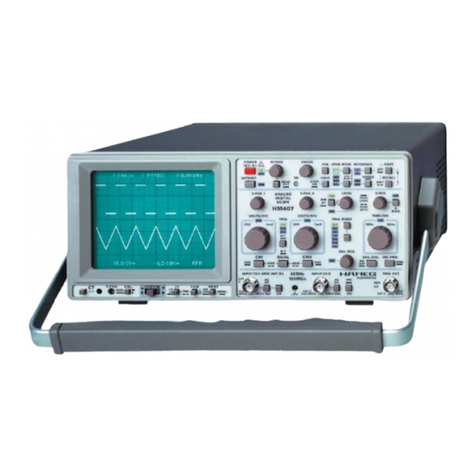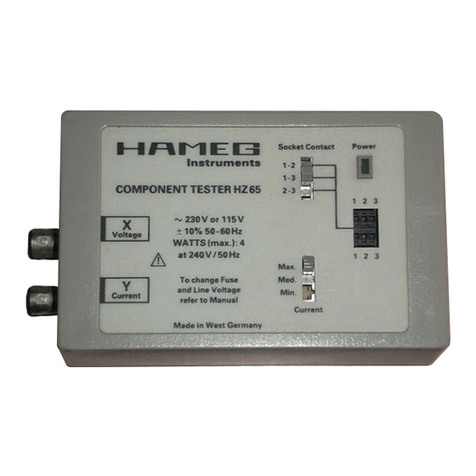
Operating Instructions
General Information
The new HM 103-2 is as easy to use as all HAMEG instru-
ments. Technologically it represents the latest state of en-
gineering in this price range. This is particularly illustrated by
the increased use of monolithic integrated circuits. The log-
ical arrangement of the controls and connectors on the front
panel ensures that the user will quickly become familiar
with the operation of the instrument. However, even ex-
perienced operators are advised to read the following in-
structions thoroughly, as they include important informa-
tion relating to the use of the HM 103-2.
The front panel is subdivided into three sections according
to the various functions. The INTENS. (intensity), FOCUS,
and TR (trace rotation) controls are arranged directly below
the screen of the cathode-ray tube (CRT). Also the calibrator
output (CAL. 0.2V) is located in this section.
The Y-Section, located on the right of the screen, contains
the red POWER pushbutton and indicating LED, the vertical
input BNC connector with its input coupling pushbutton
(AC/DC), the GD (ground) pushbutton, and the CT (Compo-
nent Tester) pushbutton with two banana jacks. Further-
more, the Y-Section contains the Y-AMPL. input attenuator
switch with its variable control, Y-POS. (position) control,
and the Y-MAG.x5 pushbutton.
All operating controls for TIMEBASE, triggering, and X-
POS. are arranged on the right side of the front panel in the
X-Section. This section contains five pushbuttons and two
input BNC connectors for external triggering and external
horizontal deflection.
The instrument is so designed that even incorrect operation
will not cause serious damage. The pushbuttons control
only minor functions, and it is recommended that before
commencement of operation all pushbuttons are in the
"out" position. After this the pusbuttons can be operated
depending upon the mode of operation required. For a bet-
ter understanding of these Operating Instructions the front
panel picture at the end of these instructions can be un-
folded for reference alongside the text.
The HM 103-2 accept all signals from DC (direct voltage) up
to afrequency of at least 10MHz (-3dB). For sinewave volt-
ages the upper frequency limit will be 20-25 MHz. How-
ever, in this higher frequency range the vertical display
height on the screen is limited to approx. 2div. In addition,
problems of time resolution also arise. For example, with
10 MHz and the fastest adjustable sweep rate (200ns/div.),
one cycle will be displayed every O.Bdiv. The tolerance on
indicated values amounts to ±3% in the vertical and ±5%
in the horizontal deflection direction. Ail values to be mea-
sured can therefore be determined reatively accurately.
However, from approximately 3MHz upwards the measur-
ing error will increase as aresult of loss of gain. At 8 MHz
this reduction is about 10%. Thus, approximately 11%
should be added to the measured voltage at this frequency.
As the bandwidth of the amplifiers differ (normally between
10 and 15 MHz), the measured values in the upper limit
range cannot be dffined exactly. Additionally, as already
mentioned, for frequencies above 10MHz the dynamic
range of the display height steadily decreases. The vertical
amplifier is designed so that the transmission performance
is not affected by its own overshoot.
Warranty
Before being shipped each instrument must pass a10hour
quality control test. Almost every early failure can be de-
tected by means of intermittent operation during this test.
Nevertheless, acomponent may fail but only after alonger
period of operation. Therefore, all HAMEG instruments
are under warranty for aperiod of two years, provided
that the instrument has not undergone any modifications.
HAMEG will repair or replace products which prove to be
defective during the warranty period. No other warranty is
expressed or implied. HAMEG is not liable for consequen-
tial damages. It is recommended that the instrument be re-
packaged in the original manner for maximum protection.
We regret that transportation damage due to poor packag-
ing is not covered by this warranty.
In case of any complaint, attach atag to the instrument with
adescription of the fault observed. Please supply name and
department, address and telephone numberto ensure rapid
service.
Safety
This instrument is designed and tested according to interna-
tional safety standards (e.g. IEC348: Safetyrequirements
for electric measuring apparatus). The instrument has
left the factory in perfect safety condition. To preserve this
state and to ensure operation without danger, the user
must observe all advises and warning remarks in these
Operating, Test, and Service Instructions. The case, chas-
sis, and all measuring terminals are connected to the
Safety Earth conductor. The specification of the instru-
ment corresponds to Safety Class I(three-conductor AC
power cable). The grounded accessible metal parts (case,
sockets, jacks) and the power line circuit of the HM 103-2 are
tested against one another with 2000V50 Hz. Under certain
conditions, 50 Hz or 60 Hz hum voltages can occur in the
Printed in Germany (1991) Ml 103-2
